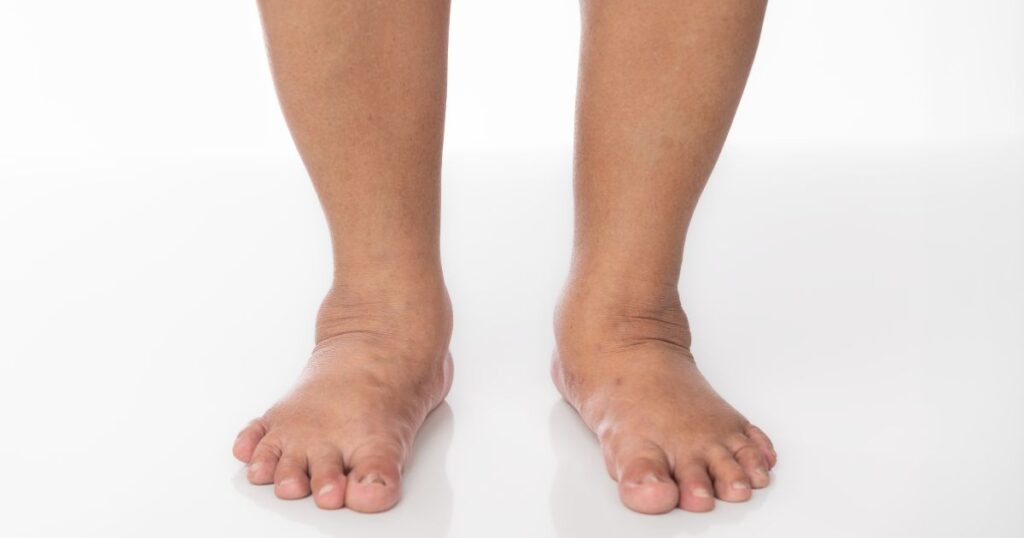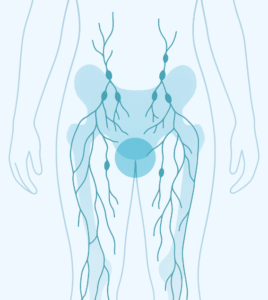Lymphedema, a condition that causes swelling in the arms or legs due to a disrupted lymphatic system, affects millions worldwide. But did you know that it can also impact skin sensitivity? Skin changes associated with lymphedema often go unnoticed, yet they can significantly affect daily life. This article explores the relationship between lymphedema and skin sensitivity, focusing on practical management strategies to improve quality of life.
Overview of Skin Sensitivity
Skin sensitivity refers to heightened reactions to stimuli, such as touch, temperature, or pressure, often manifesting as pain, irritation, or discomfort. In individuals with lymphedema, skin sensitivity can be a significant issue. The swelling caused by lymphedema can cause the skin to become more fragile and reactive to everyday activities. This heightened sensitivity can lead to discomfort, making daily tasks challenging.
Importance of Understanding the Relationship Between Lymphedema and Skin Sensitivity
Recognizing how lymphedema affects skin sensitivity is vital for patients and healthcare providers. By understanding these effects, proper management can help reduce complications like infections and improve overall skin health. Furthermore, addressing these issues proactively can lead to a better quality of life for those affected by this chronic condition.
Understanding Lymphedema
Causes and Risk Factors
Lymphedema occurs when lymph fluid accumulates in the tissues abnormally, leading to swelling. There are two primary types of lymphedema: primary and secondary.
Primary Lymphedema
Primary lymphedema is typically a hereditary condition where lymphatic vessels are malformed or absent from birth. This type can develop at any age but is often seen in adolescence or early adulthood.
Secondary Lymphedema
Secondary lymphedema is more common and typically results from damage to the lymphatic system due to surgery, radiation, or trauma. Cancer treatments, particularly those involving the removal of lymph nodes, are a common cause of secondary lymphedema.
Symptoms and Diagnosis
Lymphedema is primarily characterized by swelling, but its symptoms can extend beyond physical discomfort.
Swelling and Discomfort
The most noticeable symptom of lymphedema is persistent swelling, usually in the limbs. This swelling can cause tightness, heaviness, and pain, leading to difficulty moving the affected limbs.
Diagnostic Methods
To diagnose lymphedema, healthcare providers use various methods, including physical examinations, medical imaging (such as MRI or ultrasound), and sometimes lymphoscintigraphy, which tracks the movement of lymph fluid.
The Impact of Lymphedema on Skin Sensitivity
Lymphedema can affect the skin in several ways, making it more sensitive and prone to complications. Here’s a closer look at the effects:
Changes in Skin Texture and Integrity
The buildup of lymph fluid can cause the skin to stretch, resulting in changes in texture. The skin may become thicker, drier, or more prone to cracking. As a result, it becomes more susceptible to irritation, making it sensitive to touch or even changes in temperature.
Increased Susceptibility to Infections
The risk of infections increases significantly when the skin becomes compromised, as in lymphedema. Conditions like cellulitis (a skin infection) are common in those with lymphedema. Because the lymphatic system plays a crucial role in immune function, any impairment increases the chances of bacterial or viral invasions.
Psychological Effects of Skin Sensitivity
Living with lymphedema can take a mental toll. Skin sensitivity, especially when accompanied by swelling or changes in appearance, can cause emotional distress. Anxiety, depression, and low self-esteem are not uncommon among those dealing with both the physical and psychological aspects of lymphedema.
Management Strategies for Lymphedema and Skin Sensitivity
While lymphedema and its associated skin sensitivity can be challenging, various management strategies can help improve comfort and prevent complications. Here are some effective methods:
Skin Care Routines
Proper skincare is essential for managing the symptoms of lymphedema and preventing skin irritation. A consistent skincare routine can hydrate skin, reduce sensitivity, and prevent damage.
Moisturization Techniques
Moisturizing the skin regularly helps to combat dryness and prevent cracking. Look for lotions and creams that contain ingredients like aloe vera, shea butter, or hyaluronic acid, which can soothe and hydrate the skin.
- Apply moisturizer immediately after a bath or shower while the skin is still damp to lock in moisture.
- Avoid harsh fragrances or chemicals that may irritate sensitive skin.
Protective Measures
Protecting the skin from environmental factors is key to reducing skin sensitivity. Here’s how:
- Wear sunscreen when exposed to sunlight, as lymphedema-prone skin is more sensitive to UV rays.
- Use soft fabrics for clothing to avoid friction and irritation on the skin.
Compression Therapy
Compression garments, such as stockings or sleeves, are a common treatment for lymphedema. They help manage swelling and improve circulation, which can also reduce skin irritation and discomfort.
A healthcare professional must properly fit compression therapy to ensure it works effectively and doesn’t cause additional skin sensitivity.
Physical Therapy and Exercise
Physical therapy is crucial in managing lymphedema. Therapists teach individuals how to perform lymphatic drainage exercises, which help to move lymph fluid away from swollen areas. Gentle exercises, such as walking or swimming, can also help improve circulation, reducing swelling and skin sensitivity.
Regular movement of the affected limbs can keep the skin healthier and reduce the sensation of tightness or discomfort.
Conclusion
Lymphedema and skin sensitivity are closely linked; understanding this connection is essential for effective management. Combining skincare, compression therapy, and physical activity, those affected by lymphedema can alleviate discomfort and improve their overall well-being. Individuals can manage their condition more effectively and prevent complications by taking proactive steps.
FAQs
1. Can skin sensitivity in lymphedema be reversed?
While skin sensitivity may not be fully reversible, it can be managed effectively through proper skincare, compression, and physical therapy.
2. What are the best moisturizers for sensitive skin in lymphedema?
Look for gentle, fragrance-free moisturizers with soothing ingredients like aloe vera or shea butter to keep the skin hydrated without irritating it.
3. How often should I wear compression garments?
Compression garments should be worn as recommended by a healthcare professional. Typically, they are worn during the day and removed at night unless otherwise instructed.
4. Can exercise help with skin sensitivity in lymphedema?
Yes, gentle exercises like walking or swimming improve circulation, reduce swelling, and enhance skin health.
5. What is the risk of infection with lymphedema?
Lymphedema increases the risk of infections such as cellulitis due to the compromised skin barrier and impaired immune function. It’s crucial to monitor for signs of infection and seek prompt medical care if needed.





